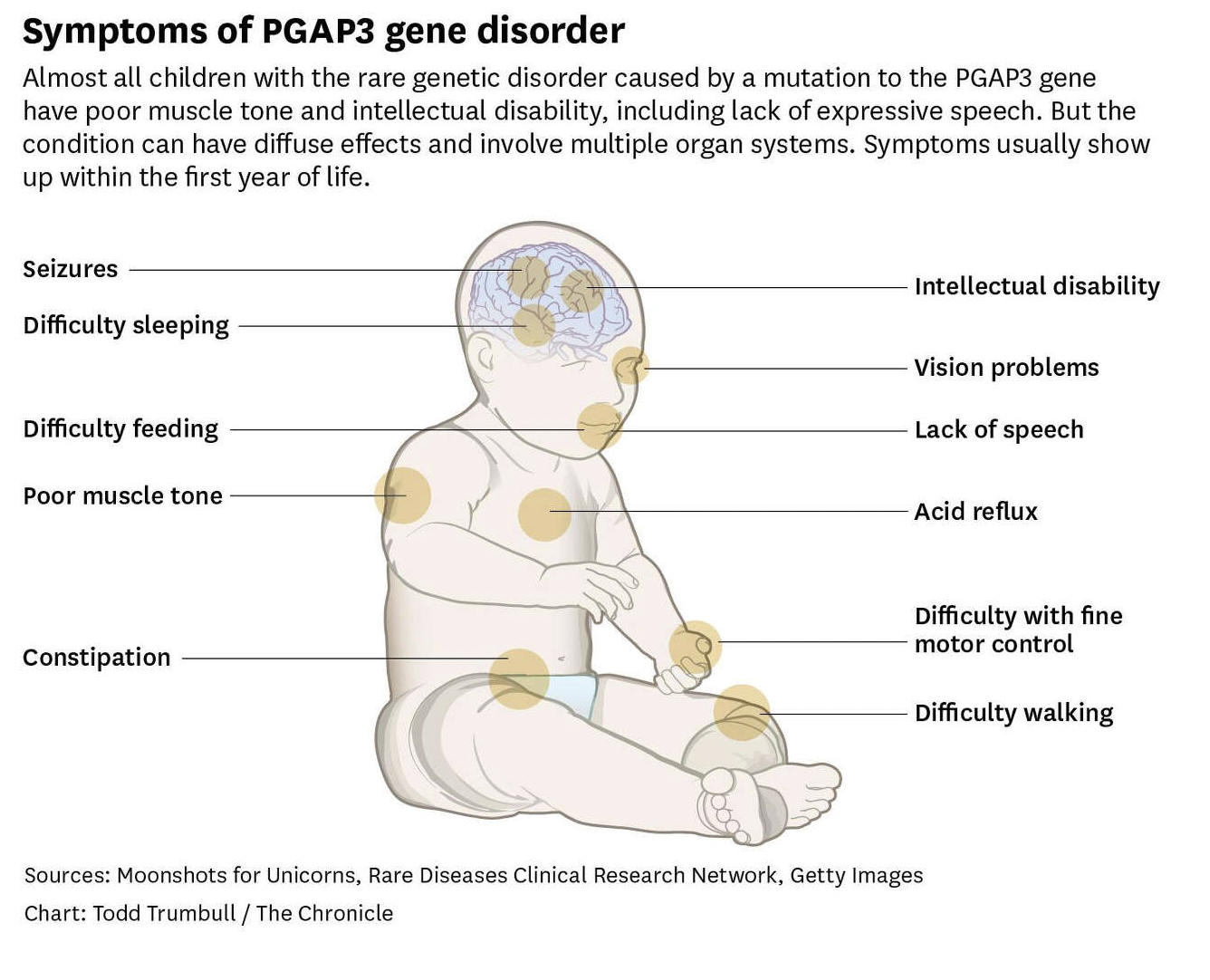ABOUT MOONSHOTS
ABOUT PGAP3-CDG
How does a child get PGAP3?
PGAP3 is a disease that is inherited in a recessive pattern, meaning both parents must be carriers of the gene mutation and each parent must pass on a copy of the mutation for the child to be affected.
Therefore, every time two carriers have a baby, there is a 1 in 4 or 25% chance they will have an affected baby.
We created Moonshots for Unicorns because we wanted no family to be told what we were on the day we received Lucy’s diagnosis: “I’m sorry, there is no cure and no treatment. Focus on therapy and quality of life.”
In 2023, this should not be true for any genetic disorder. Gene therapy, ASO technology, and CRISPR/Cas9 based therapies are here.
Cures exist. We just have to make them.
In creating a cure for Lucy and other kids with PGAP3, we are carving a path for other single-gene disorders and the unicorn children who have them - because they all deserve a Moonshot.
Is there a cure for PGAP3?
Unfortunately, no. But there will be soon. Gene therapy has corrected the genetic defect in Lucy’s cells in the lab, and it is currently being tested on PGAP3 mice. We are working to translate this into a clinical trial in humans in the next 12-18 months.
Currently, funding is limited because of the small patient population. We need your help in spreading awareness and raising funds to turn this cure into a reality.
This is huge.
Our work will answer some of medicine’s most important questions:
At what age can autism and intellectual disability due to genetics be reversed?
Can AAV9 gene therapy fully reverse cognitive deficits (i.e. can the brain fully repair itself?)
How can we best streamline AAV9 gene therapy to make it “plug and play” for thousands of genetic disorders?
Can we identify thousands (if not more) children who could have their lives fundamentally changed through PGAP3 gene therapy?
And so much more…



